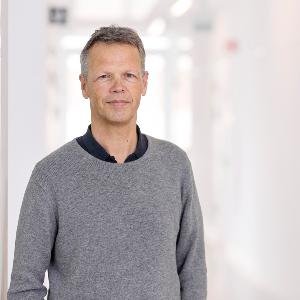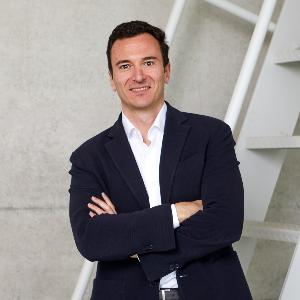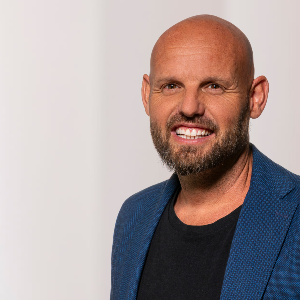LMU successful with two Collaborative Research Centre funding applications
21 Nov 2025
The German Research Foundation (DFG) is funding two new projects in the fields of medicine and anatomy.
21 Nov 2025
The German Research Foundation (DFG) is funding two new projects in the fields of medicine and anatomy.
In the latest round of funding approvals by the German Research Foundation (DFG), LMU, together with its partner universities, has successfully secured funding for large research networks. A new CRC on the causes of neurovascular diseases will be established under the leadership of LMU as well as an SFB/Transregio on the properties and functions of desmosomes – with significant participation from LMU. Two other transregional medical consortia are entering a further round of funding.
My congratulations! This is well-deserved recognition of the dedication of the researchers involved, and it sends an important signal to society: at LMU, we are researching the future. An SFB not only provides financial support but also serves as encouragement to continue thinking long-term. That is how major scientific questions can be answered.University President Matthias Tschöp
This once again demonstrates our excellence: through this funding for medical research at LMU, the DFG affirms the high scientific quality of our researchers at the highest level of international competitiveness. It attests to our colleagues’ exceptional approaches and problem-solving capabilities.Benedikt Grothe, Vice President for Natural and Life Sciences

Martin Dichgans, Director of the Institute for Stroke and Dementia Research (ISD) at LMU University Hospital | © LMU / Stephan Höck
Diseases of the brain’s blood vessels – so-called neurovascular diseases – are the world’s second most common cause of death and a major contributor to long-term disability and dementia. Yet, only few targeted treatment options are currently available.
The new CRC 1744 CCN in NVD (Compartmentalized Cellular Networks in Neurovascular Diseases) based at LMU aims to uncover the causes of these diseases and pave the way for novel therapeutic strategies. The CRC is jointly led by Professor Martin Dichgans, Director of the Institute for Stroke and Dementia Research (ISD) at LMU University Hospital, and Professor Arthur Liesz, Head of the Stroke Immunology Laboratory (also ISD, LMU University Hospital). Both are also members of the Excellence Cluster SyNergy.
At the heart of the research initiative lies a fundamental insight: the brain is far more compartmentalized than previously thought. Within these distinct compartments, vascular, immune, and glial cells work together in finely tuned networks. These compartmentalized cellular networks (CCNs) are crucial for maintaining and protecting neurons – and may hold the key to understanding many neurovascular diseases.

Arthur Liesz, Head of the Stroke Immunology Laboratory | © Boris Schmalenberger
When these networks become disrupted, the consequences can be severe: impaired blood flow, inflammation, or hemorrhage can cause long-term damage to brain function.
The interdisciplinary CRC brings together experts in neurobiology, immunology, glial and stem cell research, genetics, and data science. Their shared goal is to understand how these cellular networks develop, how they function in the healthy brain, and what happens when they fail in disease. The research will focus on cerebral small vessel disease, amyloid deposition, ischemic stroke, and intracerebral hemorrhage.
“Our goal is to develop new therapeutic strategies that specifically target the disturbed cellular networks within the brain – laying the foundation for more effective treatments of neurovascular diseases,” says Professor Martin Dichgans.

Jens Waschke, Chair Professor of Anatomy I at LMU’s Institute of Anatomy | © TRR 425
In the new CRC/TRR 425 DEFINE (Desmosomal dysfunction in epithelial barriers), the focus will be on special intercellular junctions. The skin and mucous membranes in the digestive tract are important barriers between the human body and the environment. To withstand the mechanical stresses exerted on the different tissues, cells are held together by cell-cell junctions known as desmosomes.
Within the TRR, the researchers will investigate the different characteristics and functions of desmosomes in epithelial tissues and how dysfunctions of desmosomes affect human health. The spokesperson for the new research collaboration is provided by Marburg University, while LMU and the University of Würzburg are project partners. Jens Waschke, Chair Professor of Anatomy I at LMU’s Institute of Anatomy, is co-speaker.
There is increasing evidence that desmosomal dysfunction impairs the barrier function of skin and mucous membranes and is central to the onset and perpetuation of disorders. In DEFINE, basic researchers in cell biology and immunology are joining forces with clinician scientists to investigate the consequences of desmosomal dysfunction on the development of three model diseases: pemphigus vulgaris (PV, an autoimmune disease of the skin), inflammatory bowel disease (IBD), and eosinophilic esophagitis (EoE, a chronic inflammation of the esophagus).
As the first step, the researchers will identify which dysfunction of desmosomes induce these diseases and characterize the underlying mechanisms. Thereby, they want to better understand how desmosomes maintain the stability of epithelial tissues via regulation of processes such as barrier integrity, cellular signaling, tissue regeneration, and wound healing. “With the new collaboration, we will gain completely new insights into the complexity of desmosomal functions,” says Jens Waschke. “Based on these findings, we plan to develop targeted therapeutic strategies.”
LMU is also involved in SFB/TRR 205 The Adrenal: Central Relay in Health and Disease, which is based at Dresden University of Technology and will be continued for a further funding period.
The SFB/TRR 338 LETSIMMUN (Lymphocyte Engineering for Therapeutic Synthetic Immunity) will also be continued with the participation of LMU. The Technical University of Munich (TUM) is the coordinating institution.